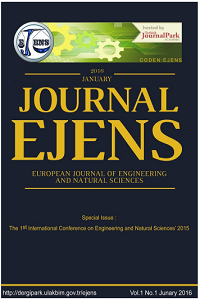Grounded and Floating Real Inductor Simulations and Experimentations using Second Generation Current Conveyors
Grounded and Floating Real Inductor Simulations and Experimentations using Second Generation Current Conveyors
inductance simulation, current conveying, analog design second generation current conveyors,
___
- [1]. Smith, K.C. ve Sedra, A., 1968, The current conveyor: A new circuit building block. IEEE Proc., 56: 1356-1369.
- [2]. Smith, K. C. ve Sedra, A., 1970, A second generation current conveyor and its applications. IEEE Trans. Circuit Theory, CT-17: 132-134.
- [3]. Soliman, A. M., 1973, Inductorless realization of an all-pass transfer function using the current conveyor. IEEE Trans. On Circuit Theory, CT-20: 80-81.
- [4]. Pal, K., Singh, R., 1982. Inductorless current conveyor allpass filter using grounded capacitors. Electronics Letters, 18(1): 47.
- [5]. Analog Devices AD844, 1989, “60 MHz 2000 V/μs Monolithic Op Amp”, Rev. 2009
- [6]. Nandi, R., 1978, Active inductance using current conveyors and their application in a simple bandpass filter realization. Electronics Letters, 14: 373-375.
- [7]. Fabre, A., Saaid, O., Wiest, F. ve Boucheron, C., 1995. Current controlled bandpass filter based on translinear conveyors. Electronics Letters, 31(20): 1727-1728.
- [8]. Frey D.R., 1993, “Log-domain filtering: An approach to current-mode filtering”, IEEE Proceedings-G: Circuits, Devices and Systems, Vol. 140, pp. 406-416.
- [9]. Senani, R., 1985. Novel high-order active filter design using current conveyors. Electronics Letters, 21(22): 1055-1056.
- Başlangıç: 2015
- Yayıncı: CNR Çevre
Diagnosis of Coronary Artery Disease Using Deep Belief Networks
Determination of Priority Contamination Factors in Lake of Manyas (Bird Paradise)
Effect of High Dosage Air-Entraining Admixture Usage on Micro Concrete Properties
Preparation and Stability Analysis of Water Based Al2O3, TiO2 and ZnO Nanofluids
PSIM Simulation of Flyback Converter for P&O and IC MPPT Algorithms
Process Design for the Recycling Of Tetra Pak Components
Evaluation of Commercial Type of Split Air Conditions by Using Condenser Waste Heat in a Boiler
